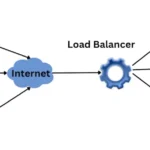Making Elastic IPs even more elastic!
In today’s fast-paced business environment, it’s more important than ever to ensure that your applications are available and accessible at all times. An ADC or application delivery controller is a key component of any high-availability infrastructure.
Amazon AWS provides the capability to allocate an Elastic IP address to the virtual machine you are using, which allows you to access the application server using the Elastic IP rather than the actual public IP address. This is especially important when you have the Elastic IP allocated to a public IP that is an ADC and, more importantly, part of an HA pair.
However, this raises the question: how can we allocate the same Elastic IP to the secondary ADC automatically so that users can carry on using the application in the event of a failure? This is where the AWS Cloud Connector (ACC) comes in. Designed especially for use with an Edgenexus EdgeADC HA pair within Amazon AWS, the ACC monitors applications for availability and communicates with the AWS API to move the Elastic IP to the secondary failover ADC, ensuring continuous availability.
The Problem
One of the biggest challenges in managing an HA pair of ADCs is ensuring that the secondary ADC is available and ready to take over in the event of a failure of the primary ADC. This normally requires the manual allocation of the Elastic IP to the secondary ADC, which can be time-consuming and error-prone. The ACC solves this problem by automatically monitoring the application and its server(s) and communicating with the AWS API to move the Elastic IP to the partner ADC, ensuring continuous availability.
How Does it Work?
The ACC monitors an application and its server(s) through a special monitoring Virtual Service. This Virtual Service is responsible for monitoring the connection to the Real Servers and working with Amazon’s AWS API to move the Elastic IP to the partner ADC in the event of a failure. This ensures that the application remains available even if the primary ADC fails.
Once the ACC has detected a failure of the primary ADC, it communicates with the AWS API to move the Elastic IP to the secondary ADC. This process is seamless and transparent to the user, who can continue to use the application as usual. The ACC also provides real-time monitoring and reporting, so you can keep track of the status of your application and quickly identify any issues that may arise.
Benefits of the AWS Cloud Connector
The AWS Cloud Connector provides a number of benefits to organisations that use Amazon AWS, including:
- Improved reliability and resilience: By ensuring that the secondary ADC is available and ready to take over in the event of a failure of the primary ADC, the ACC helps to improve the reliability and resilience of your application infrastructure.
- Simplified management: The ACC simplifies the process of managing your AWS environment by automating the process of moving the Elastic IP to the secondary ADC, thereby reducing the risk of errors and saving time.
- Greater visibility: The ACC provides real-time monitoring and reporting, so you can keep track of the status of your application and quickly identify any issues that may arise.
- Reduced costs: By reducing the risk of downtime and improving the reliability of your applications, the ACC helps to reduce the cost of resolving problems and the impact of outages on your business.
The AWS Cloud Connector is a perfect and complementary tool for organisations that use an ADC within Amazon AWS and need to ensure the continuous availability of their applications. With its ability to monitor applications for availability and communicate with the AWS API to move Elastic IPs to the secondary failover ADC, the ACC provides a simple and effective solution for ensuring your AWS environment uptime.











